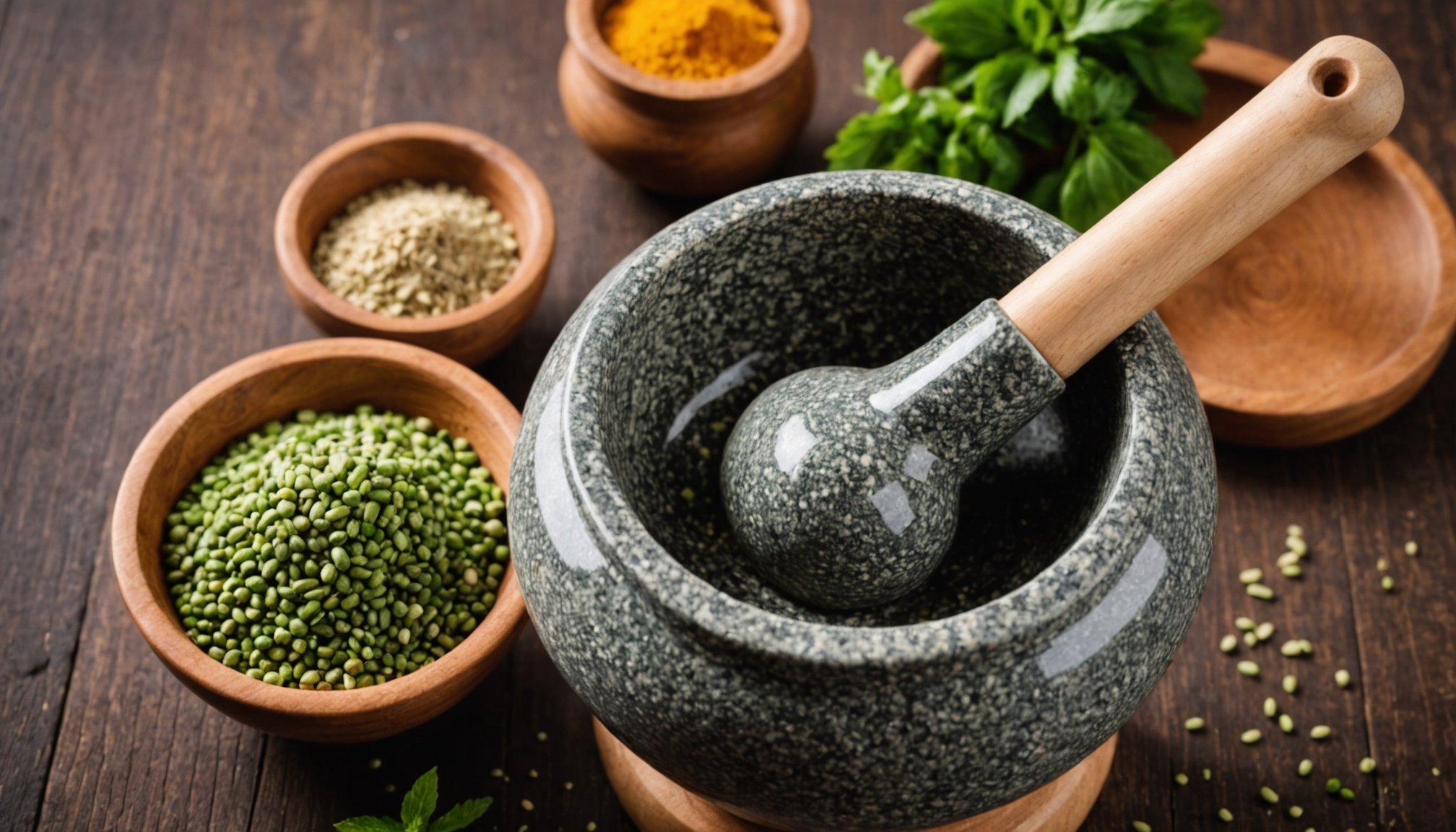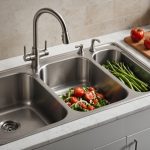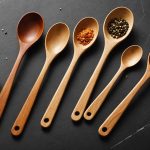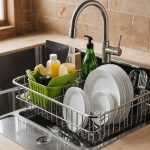In kitchens worldwide, you will often find the simple yet powerful duo of a pestle and a mortar. An essential tool for grinding and blending various ingredients and spices, their relevance spans centuries dating back to ancient cooking practices. They have remained ever-present across cultures, showcasing their timeless functionality and usefulness. When it comes to selecting the best material for a pestle and mortar for your daily use, it’s essential to consider the nature of the food you cook, the spices you grind, and your personal preference. Today, we will delve into a detailed discussion of which materials are classically used and their unique advantages.
Understanding the Importance of a Perfect Mortar and Pestle Set
A pestle and mortar set is not just a kitchen tool. It is a culinary tradition that comes with a rich history and cultural significance. It is no wonder then that it is an essential part of your kitchen. A pestle and mortar set isn’t a mere showpiece but a tool that impacts your food’s quality, flavor, and texture. Choosing the right set can make a significant difference in your cooking. So let’s explore the best materials for a pestle and mortar set used daily.
In the same genre : Which Is More Energy Efficient: Glass Top Stove or Coil Burners?
Granite: A Top Choice for Your Kitchen
Granite is a popular choice for both pestles and mortars for a variety of reasons. It is known for its durability, resistance to scratches and cuts, and its ability to withstand high heat. A granite pestle and mortar set is ideal for grinding hard spices, crushing garlic, and blending wet or dry ingredients.
Granite’s rough interior surface provides a perfect texture for grinding. You will find it easier to crush and grind ingredients against this surface, achieving a fine consistency. Additionally, granite does not absorb flavors or odors, making it a handy tool for grinding a variety of spices. An important note is that granite sets should be cleaned with warm water and soap, avoiding harsh cleaners to maintain the material’s integrity.
Also to read : How to Select the Most Efficient Layout for a Kitchen with Multiple Cooktops?
Marble: A Classic and Elegant Option
Marble pestles and mortars are not only beautiful but practical as well. They’re known for their smooth and cool surface, which is perfect for grinding small, delicate spices and herbs. A marble set is ideal if you often work with ingredients that require a gentle touch.
Its non-porous characteristic aids in preventing the absorption of flavors and odors, making it versatile for grinding different ingredients. However, acidic food substances like vinegar or lemon juice can etch the marble surface, so it’s best to avoid using them in a marble mortar and pestle. A quick rinse with warm water and mild soap after each use will ensure your marble set retains its sheen and functionality.
Thai Clay: A Traditional Touch to Your Daily Cooking
Thai Clay, also known as earthenware, is often used in Thai cooking. This material is a natural insulator, so it keeps ingredients fresh and cool while grinding. Moreover, Thai clay pestles and mortars have a coarse surface that aids in better grinding, especially in the case of chilies and garlic.
One downside of a Thai clay set is that it requires a bit more maintenance. It’s best to avoid harsh detergents and very hot water. Also, since it’s porous, it might retain some flavors. If you are fond of Thai cuisine and wish to add a traditional touch to your kitchen, a Thai clay pestle and mortar set can be a good investment.
Wood: For a Rustic and Organic Touch
Wooden pestles and mortars are often preferred for their lightweight and organic feel. They are perfect for grinding soft ingredients and do not require much force. Your hand will find it comfortable to handle a wooden pestle, making it an excellent choice for long and strenuous grinding sessions.
However, wooden sets are not ideal for heavy-duty tasks such as crushing hard spices. They are porous and can absorb flavors and odors, limiting their versatility. Also, moisture can cause the wood to warp or crack over time. To extend your wooden set’s lifespan, avoid soaking it in water and always dry it thoroughly after cleaning.
Overall, the best material for a pestle and mortar really comes down to your individual needs and preferences. Whether it’s the durable granite, the elegant marble, the traditional Thai clay, or the organic wood, each material offers unique advantages. Therefore, it’s important to consider the nature of your cooking and the level of maintenance you’re willing to provide when choosing the perfect set.
Cast Iron: Heavy-Duty and Long-Lasting
Cast iron pestles and mortars are gaining popularity due to their heft and durability. This heavyweight material is perfect for grinding tough ingredients like coffee beans, hard spices, and even making robust curry pastes. The hefty weight of a cast iron pestle set ensures that it stays stable throughout the grinding process, making your task easier.
A cast iron mortar pestle set is particularly noteworthy for its longevity. This material, known for its sturdiness, is less likely to chip or break compared to other materials. Cast iron mortars pestles also have the unique advantage of improving with age, as long as they are adequately cared for. This means seasoning your cast iron set regularly, much like a cast iron skillet, to prevent rust and maintain its non-stick qualities.
Cleaning a cast iron pestle mortar is also straightforward. It can be washed with warm water and a mild detergent, then dried completely to prevent rusting. Remember, the cast iron set is not dishwasher safe and should not be soaked in water.
Food Processor: A Modern Alternative
While nothing can truly replace the traditional pestle and mortar, a food processor might be a reasonable alternative for those who find manual grinding tedious. Food processors can handle most grinding tasks, from making curry pastes to grinding salt and pepper.
The food processor’s cup capacity is often much larger than a standard pestle set, allowing you to blend or grind larger quantities at once. However, a food processor may not provide the same control and consistency as manually grinding using mortars pestles. You might end up with unevenly ground spices or a paste that’s too smooth.
Another downside to using a food processor is the noise. It can be significantly louder than using a pestle and mortar. On the plus side, it saves time and effort, especially when preparing large meals. Cleaning is also a breeze since most parts are dishwasher safe.
Conclusion: Choosing the Best Mortar and Pestle
Choosing the best material for your pestle and mortar set depends largely on your cooking needs and preferences. If you cook a lot of recipes that require hard spices and robust pastes, a granite mortar or a cast iron set might be the best choice. For more delicate grinding tasks, a marble mortar could be ideal.
If you’re fond of Thai cuisine or wish to add a traditional touch, a Thai clay pestle and mortar set may be worth considering. And for those who appreciate a rustic and organic touch, a wooden pestle and mortar could be the perfect addition to your kitchen.
Alternatively, if you prefer convenience and speed, you might want to consider a food processor. While it can’t completely replicate the control and consistency offered by a pestle and mortar, it can still be a handy tool for various grinding tasks.
Regardless of the material you choose, remember to care for your set properly to ensure its longevity. After all, a well-maintained pestle and mortar is a kitchen companion that can last for generations, offering countless meals filled with perfectly ground spices and unforgettable flavors.











